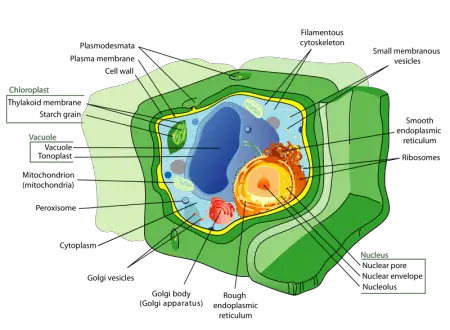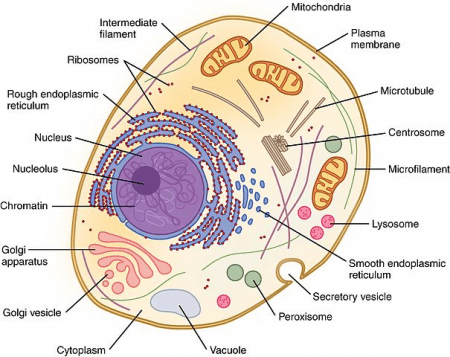The most basic unit of all living things is called a cell. It is the smallest structural and fundamental component of life. All organisms, simple or complex, consist of one or more cells. When it comes to plants and animals, there are a number of contrasts in cell structure and components. This article will help you understand plant cells and animal cells as well as their main differences.
Summary Table
| Plant Cells | Animal Cells |
| Length ranges from 10 to 100 micrometers; uniform in size | Length ranges from 10 to 30 micrometers; they vary in size |
| Have cell walls made of cellulose and cell membranes | Do not have cell walls but have cell membranes |
| Have fixed rectangular shapes | Have irregular, round shapes |
| One large central vacuole takes up 90% of the cell volume | Have one or more vacuoles which are smaller |
| Have chloroplasts because they make their own food | Do not have chloroplasts |
| Able to produce all 20 amino acids | Can produce 10 of the 20 amino acids |
| Contain glyoxysomes which help in the production of sugar in germinating seeds | Do not have glyoxysomes |
| Most do not contain cilia | Some animal cells have cilia |
| Lysosomes are absent | Have lysosomes |
Definitions

Plant cells are the most basic unit of plants. They are eukaryotic cells meaning they contain a nucleus. The size of plant cells can range from 10 to 100 micrometers and they are uniform in size. Plant cells are usually rectangular. They have a cell wall and a cell membrane. They grow and increase their cell size by consuming more water into the central vacuole. A vacuole is a cavity within the cell, surrounded by a single membrane which contains fluid, food, or metabolic waste. The vacuole of plant cells are large and occupy up to 90% of the cell’s volume.
Plant cells contain plastids, which are essential for photosynthesis. Photosynthesis occurs in the chloroplast, which contains the green pigment called chlorophyll. Plants essentially make their own food and are able to produce all 20 amino acids. They store energy as starch. They also have plasmodesmata, which are microscopic channels located between the cell walls that permit connection signals and molecules to transfer from one plant cell to another. Plant cells also contain an organelle called the centrosome, which helps regulate the cell division cycle. Moreover, plant cells also have structures called glyoxysomes, which help in the production of sugars, particularly in germinating seeds.

Animals cells are eukaryotic cells and are the most basic unit of animals. Animal cells are generally small and vary in size from 10 to 30 micrometers. They appear in various sizes and tend to be round or irregularly shaped. Animal cells do not have a cell wall but have a cell membrane. They increase their size by increasing in number through cellular reproduction. These cells may have one or many small vacuoles. Some animal cells also have cilia, which are microtubules that help in the movement of cells. Apart from these, animal cells also contain lysosomes which have enzymes that help in the digestion of cellular macromolecules. These lysosomes function as the garbage disposal unit of animal cells.
In terms of energy storage, animals cells accumulate sustenance in the form of glycogen, which is a complex carbohydrate. When it comes to the 20 amino acids that are needed to produce proteins, only 10 are naturally produced in animal cells. Other essential amino acids are acquired by animals through their diet.
Plant Cells vs Animal Cells
What is the difference between plant cells and animal cells? Plant cells are usually bigger and uniform in size and their length ranges from 10 to 100 micrometers while animals vary in size and are smaller, ranging from 10 to 30 micrometers. A cell wall and a cell membrane are present in plant cells whereas only a cell membrane is present in animal cells. Plant cells have a fixed rectangular shape and contain a central vacuole. Animal cells, on the other hand, have round or irregular shapes and contain one or more smaller vacuoles. Chloroplasts are present in plant cells and they are able to produce all 20 amino acids compared to animal cells which do not have chloroplasts and can only produce 10 of the 20 essential amino acids. Plant cells contain glyoxysomes but do not have cilia and lysosomes. Conversely, animal cells do not have glyoxysomes but some contain cilia and lysosomes.





